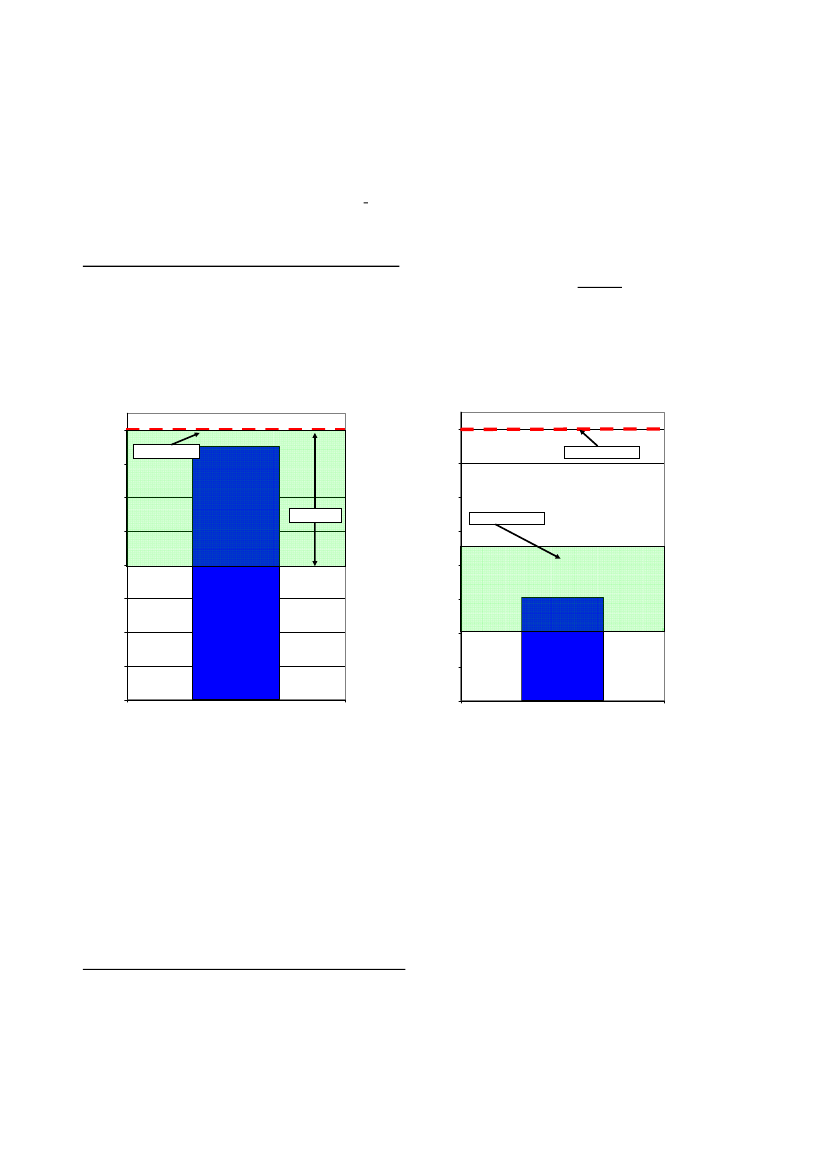Skatteudvalget 2011-12
L 32 Bilag 24
Offentligt
Cementir Holding S.p.A.Aalborg Portland A/SAttn. Mr. Jesper Sand DamtoftRørdalsvej 449100 AalborgDenmark
Your ref.
Your letter of
Our ref.
Phone
Date
239838-0
5 December 2011
European CementResearch Academy GmbH
Preliminary assessment of the state of NOxemissions and NOxabatementtechnologies at the Rørdal Plant of Aalborg Portland / DenmarkP.O. Box 30 03 3240403 DuesseldorfTannenstrasse 240476 DuesseldorfGERMANYPhone: +49-211-23 98 38-0Fax: +49-211-23 98 38-500
Dear Mr. Damtoft,Please find below our preliminary assessment (step 1) of Aalborg Portland’s NOxemissions and the applied NOxabatement technologies compared to BAT.IntroductionThe production of cement clinker is an energy-intensive process which requiresvery high temperatures. This results in the formation of NOx. As nitrogen oxidesare environmentally relevant air pollutants, the clean air policies in Europe and inthe member states intend to further reduce NOxemissions.
[email protected]http://www.ecra-online.orgChairman of the advisoryboard:Daniel GauthierManaging director:Martin SchneiderRegistration office:DuesseldorfCourt of registration:DuesseldorfCommercial registration no.:47580Tax-no.: 105/5812/1620VAT-no.: DE119353748
In Denmark, an increase of the tax on NOxemissions is currently being discussed.Through this, the authorities are aiming to promote NOxreductions. Up to now,exemptions have been granted to industrial sectors with particularly high NOemissions because otherwise the competitiveness of the affected companieswould be impaired.
Aalborg Portland is the sole cement producer in Denmark. The Rørdal plant is oneof the major stationary NOxemission sources in Denmark and is thus in the publiceye. During the past years, Alborg Portland was able to reduce the NOxemissionsof the plant significantly, but now the potential for further reduction steps seems tobe limited.
The European Cement Research Academy (ECRA) was therefore commissionedby Aalborg Portland to assess the current level of NOxemissions from the Rørdalplant and the applied NOxreduction technologies. This paper represents a first
-2-
and preliminary assessment of the emission situation in the Rørdal plant of Aalborg Cement.The European BAT Reference Document for the cement industry should be used as a stan-dard for the comparison of abatement technologies which are applied at the Rørdal plant.Furthermore, an overall evaluation should be made if the state of NOxreduction in the ce-ment sector has changed during the last years and if the reasons for reliefs from the DanishNOxtaxes are still valid.
Best Available Techniques for NOxreduction in the cement sectorAccording to the European IPPC Directive, the permit of industrial plants shall include condi-tions and emission limit values based on “best available techniques” (BAT) but taking intoaccount local considerations such as characteristics of the installation and any special needsof the local environment (today, the contents of the IPPC Directive have been incorporatedin the new “Industrial Emissions Directive”). The relevant technical information from the dif-ferent industrial sectors was collected and issued in so-called BAT Reference Documents(BREF Documents) for the respective sectors. The first BREF Document for the cement andlime manufacturing industries was published in 2001 and provided an overview about thecurrent state of cement production and emission abatement technologies for the most impor-tant air pollutants. During the past years, the cement BREF Document was revised and thesecond edition was published in 2010.
The cement BREF Document contains amongst other things a list of measures for NOxre-duction that have been successfully applied in the cement industry. It should be emphasizedthat the mentioned reduction measures do not have a cumulative effect on the reduction ef-ficiencies. Based on expert judgements, BATs were selected and associated emission levelsand/or consumption levels were defined. According to the current version of the cementBREF Document, the following measures or techniques (applied individually or in combina-tion) are considered as BAT for NOxreduction:a)primary measures/techniques, such as:I.) flame coolingII.) low-NOxburnersIII.) mid-kiln firingIV.) addition of mineralisers to improve the burnability of the raw mealV.) process optimisationstaged combustion, also in combination with a precalciner and the use of optimisedfuel mixselective non-catalytic reduction (SNCR)selective catalytic reduction (SCR), subject to appropriate catalyst and process devel-opment in the cement industry
b)c)d)
The application of the above mentioned abatement technologies is associated with differentNOxemission levels (BAT-AELs) which have been observed by application of those meas-ures in the cement industry.
-3-
Kiln typePreheater kilnsLepol and long rotary kilns
Unitmg/Nm3mg/Nm3
BAT-AEL(daily average value)< 200 - 450400 - 800
The BAT-AEL is 500 mg/Nm3where after the application of primary measures the initial NOxlevel is > 1,000 mg/Nm3. If SNCR is applied as a NOxreduction measure, the NH3slipshould be kept as low as possible, but below 30 mg/Nm3as a daily average. If a high initialNOxconcentration requires a high NOxreduction rate, the NH3slip may be higher (up to 50mg/Nm3). The NH3slip may be even higher for Lepol and long rotary cement kilns.Short description of the kiln lines and the applied NOxreduction measuresAt the Rørdal Plant, seven rotary cement kilns are installed: five for the production of whitecement clinker and two for the production of grey cement clinker. The next paragraphs givea short description of the kiln systems and the applied NOxabatement technologies.Cement kilns for the production of grey cementThe rotary kilns 85 and 87 are installed for the production of grey cement clinker. Kiln 85 is along wet kiln with a present clinker production of 1,500 tpd. The following NOxreductionmeasures are applied at present:flame coolingaddition of mineralisersSNCR (as a test installation)Kiln 87 is a rotary cement kiln with cyclone preheater and precalciner. The current clinkerproduction is 4,632 tpd. The following NOxreduction measures are applied:low NOxburneraddition of mineralisersSNCRThough the kiln line is equipped with a precalciner, the potential of staged combustion tech-nology could not be utilised up to now.Cement kilns for the production of white cementThere are five long wet kilns for the production of white cement clinker at the Rørdal Plant,namely the kilns 73/79 (clinker capacity: 400 tpd each), the kilns 74/78 (clinker capacity:520 tpd each) and the kiln 76 (clinker capacity: 670 tpd). The flue gases are emitted into theatmosphere via three stacks. All five white cement kilns are equipped with mixing air devicesat the middle of the kiln. The injection of mixing air can reduce the stratification of the kilngases and can contribute to a more stable kiln operation. Furthermore, the amount of excessair in the kiln flame can be reduced which leads to a lower NOxformation. A burn-out of COcan also be achieved by the injection of mixing air. All in all, the staged injection of air is auseful primary measure for NOxreduction at long wet kilns. However, only at kiln 76 was themixing air installation upgraded. At the moment it is not clear how the experiences from kiln76 can be transferred to the other white cement kilns. Further NOxreduction measures wereconsidered but not continued due to the demanding technical requirements from the longwet kilns for white cement production.
-4-
NOxemissions and NOxreduction potentialBased on NOxfigures provided as long-term average emission concentrations by AalborgPortland, the NOxlevels of the kilns in the Rørdal Plant can be evaluated with respect toBAT as follows:Cement kilns for the production of grey cementAccording to the BREF Document, the achievable NOxemission level for kiln 85 (wet kiln) is400 - 800 mg/Nm3. The current emission limit values for NOxand NH3are 800 mg/Nm3and50 mg/Nm3respectively. By the application of SNCR, NOxemissions below 800 mg/Nm3canbe achieved at this kiln line (seefigure 1).The NH3level is far below the emission limitvalue. The associated emission limit values for NOxare met.
800NOxELV
800NOxELV700
700
600NOxemissions [mg/Nm3]BAT-AEL
600
NOxemission [mg/Nm3]
BAT-AEL500
500
400
400
300
300
200
200
100
100
0Kiln 85
0
Kiln 87
Fig. 1:NOxemissions from kiln 85
Fig. 2:
NOxemissions from kiln 87
Figure 2shows the average NOxemissions from kiln 87. The current emission limit valuesfor NOxand NH3are 800 mg/Nm3and 10 mg/Nm3respectively. The emission concentrationis far below the current NOxemission limit value and furthermore meets the so-called BATassociated emission level. The very low emission limit value for NH3is a limiting factor forthe application of the SNCR process because an increased injection of the reducing agentwould most likely lead to a higher NH3slip.
Cement kilns for the production of white cementThe present operation of the white cement kilns exhibits NOxemissions which are at thelower end of the BAT-AEL (400 - 800 mg/Nm3, seefigure 3).The present emission limit val-ues are met with a sufficient safety margin due to the application of process optimisationmeasures.
-5-
BAT-AEL800
700
NOxELV'sNOxemissions [mg/Nm ]3
600
500
400
300
200
100
0
Kiln 73
Kiln 79
Kiln 74
Kiln 78
Kiln 76
Fig. 3:
Present NOxemissions of the white cement kilns (three stacks), BAT-AEL and NOxemis-sion limit value
In principle, a mid-kiln firing could be installed at long wet kilns for NOxreduction. However,as the fuel characteristics are very decisive for a good quality of the white cement clinker,this potential NOxreduction measure was no longer considered. The application of additionalprimary measures would allow only slight improvements of the NOxreduction. The SNCRprocess is not BAT for long wet kilns because the appropriate temperature window for thereduction reactions is given in the rotary kiln itself so that the injection of the reducing agentwould be problematic. The principle of staged combustion can only be applied at precalcinerkilns. All in all, there is only a very limited potential for further NOxreduction steps.
SCR as a potential secondary measure for NOxreductionIn principal, the SCR technology could be applied at all types of kiln systems. If the gas tem-perature and the gas composition would not allow the installation of a high-dust plant, atleast a tail-end installation could be considered. However, an investment in the SCR tech-nology should only be carried out after completion of the demonstration projects of the Euro-pean cement industry, meaning not before 2015/2016. The investment costs would be veryhigh, depending on the plant size between 5 and > 10 Mio. € for each flue gas string.
-6-
SummaryThe preliminary assessment of the NOxabatement measures of the Rørdal plant is based oninformation provided by Aalborg Portland which also includes average NOxemission con-centrations for the kilns in question. Although BAT-associated emission levels are based ondaily averages, the situation with respect to BAT can be summarized as follows:At all kiln lines, BAT measures for NOxreduction are applied. There are constraintsdepending on the type of kiln regarding which measure can be applied, especially forthe long wet kilns.All kilns meet the current NOxemission limit value.The NOxemissions from all kilns are within the so-called BAT associated emissionlevel (BAT-AEL).The state of NOxabatement in the cement sector is almost the same as two years ago,because the SCR process is not yet developed to a state-of-the-art technology in thecement sector.Therefore, the possibilities for a further reduction of the NOxemissions are very limitedand the plant operator hardly has a chance to invest in more effective NOxreductionmeasures. As a consequence of this, an increase in the NOxtaxes would only result inan increase of the production costs which would impair the competitiveness of cementproduction in Denmark.
Yours sincerely,European Cement Research Academy GmbH
Dr. Martin Schneider
Dr. Helmut Hoppe






